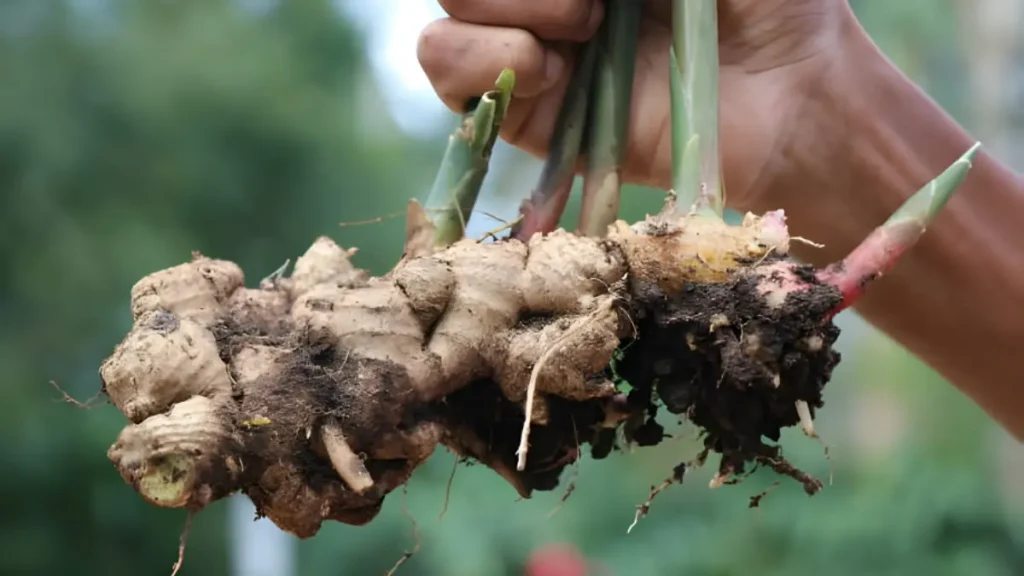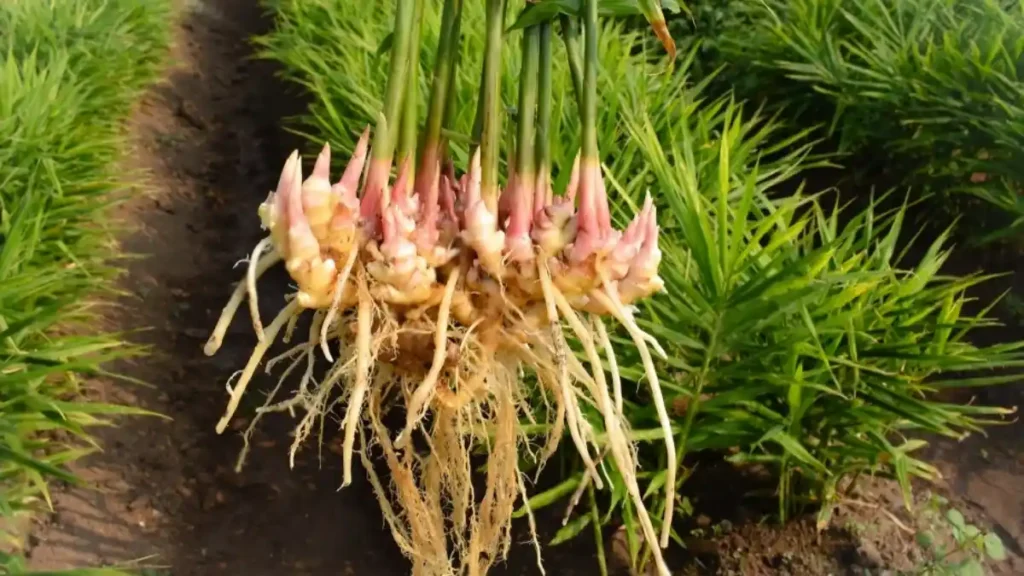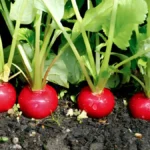Ginger, with its strong aroma and numerous culinary applications, is a popular spice and a plant that can be readily grown in your yard or inside. How to grow ginger can be a satisfying and joyful activity, regardless of your level of gardening experience. With its luxuriant foliage and lovely blooms, it not only provides you with fresh ginger for cooking and herbal medicines, but it also gives your garden a hint of tropical charm.
The primary steps on how to grow ginger:
- Begin by selecting a robust ginger rhizome from a reputable supplier or supermarket. Examine rhizomes that are firm, fat, and have produced growth buds or eyes.
- To promote sprouting, immerse the ginger rhizome in water for the entire night before planting. This facilitates the growth process’ activation.
- Depending on the climate where you live, you can grow ginger indoors or outside. Choose a broad, shallow pot with adequate drainage holes if growing indoors. If cultivating outside, pick a spot with partially shaded soil and good drainage.
- Add rich, well-draining potting soil to the pot. The top of the ginger rhizome should be just below the soil’s surface when it is positioned horizontally in the ground, with its eyes facing upward. Dust it with soil.

How to grow ginger using proper maintenance and care:
- Keep the soil wet but not saturated. After planting, give the ginger a little watering, and then give it regular watering thereafter. Refrain from overwatering as this can cause decay.
- When planted outdoors, ginger prefers partial sunlight; when grown indoors, it prefers bright, indirect light. Make sure the plant gets four to six hours of sunlight every day.
- Warm temperatures between 75°F and 85°F (24°C and 29°C) are ideal for ginger growth. Keep it out of the cold and away from anything below 50°F (10°C).
- During the growing season, provide vital nutrients to the soil every few weeks by spreading an organic compost or balanced fertilizer.
- Lightly mulch the soil’s surface to help keep it moist and prevent weed development. Straw and shredded leaves are excellent examples of organic mulches.
- When the ginger plant is ripe, which is normally after 8 to 10 months of growth, it can be harvested. Dig around the rhizome carefully, removing some while leaving some for future growth. Ginger harvested can be preserved for later use or utilized fresh.
Conclusion:
Finally, for both gardeners and aficionados, learning how to grow ginger may be a gratifying experience. It is a fairly low-maintenance plant that grows well indoors in colder climates or warm, tropical climates. Ginger is also a useful addition to any garden due to its flexibility in culinary, medicinal, and ornamental applications. Anyone may successfully plant ginger and reap its many advantages with the right care and attention. knowing how to grow ginger can transform your gardening experience and enhance your culinary creations.
Certainly! If you’d like to learn more, please consider following our WhatsApp Channel: Harvest Gardening
A frequently asked questions:
Q1: When is the best time to growing ginger?
A1: Under the right circumstances, ginger can be planted indoors all year long. Wait until after your area’s last frost before planting outside.
Q2: How to grow ginger at home?
A2: To cultivate ginger at home, put a ginger rhizome in soil that drains well and gets some sunlight. Verify that the soil is moist but not drenched. Ginger may be grown outside in a protected place but needs warmth.
Q3: What kind of soil is best for growing ginger indoors?
A3: Utilize a potting mix that drains well and is high in organic materials. For optimal drainage, potting soil combined with sand or perlite works well.
Q4: How to grow ginger in water?
A4: A fresh ginger root should first be soaked for a full night before being placed in a shallow dish of water with its eyes facing up and kept in a warm, bright position. The water should be changed often until roots and branches start to develop.



